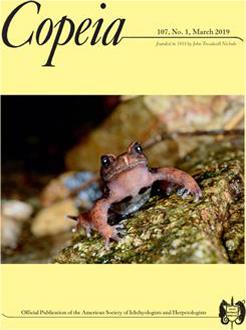Successful colonization by an invasive species is often associated with flexibility in life-history traits. The number and timing of reproductive events are among the most important of those life-history traits and are often strongly influenced by habitat stability. An invasive fish, Brook Stickleback (Culaea inconstans), was first detected in eastern Washington in 1999. They have subsequently expanded their range into water bodies of variable habitat stability, i.e., permanent, semi-permanent, and ephemeral water bodies. We hypothesized that Brook Stickleback living in unstable and unpredictable habitats would exhibit “fast” life-history traits relative to Brook Stickleback living in more stable habitats. Brook Stickleback were collected from 18 water bodies and standard length was measured. Otoliths were then extracted to determine age. Average age of Brook Stickleback in permanent wetlands was significantly greater than that of fish in semi-permanent and ephemeral wetlands, but there was no significant difference in age structure between semi-permanent and ephemeral wetlands (permanent x̄ = 1.24, semi-permanent x̄ = 0.73, ephemeral x̄ = 0.76, P < 0.001). Average length at age class 0+ was significantly less than age classes I, II, and III; however, there was no significant difference between age classes I, II, and III (0+: x̄= 39.73; I: x̄ = 46.42; II: x̄= 45.14; III: x̄= 49.10; P < 0.001). The results suggest that Brook Stickleback exhibit different life-history characteristics depending upon the habitats in which they are found. Brook Stickleback in unstable habitats may be functionally semelparous; however, it is possible that some individuals may produce multiple clutches within a single spawning season. Finally, we found that the only accurate way to measure Brook Stickleback age is through otolith analysis, drawing into question the conclusions of previous work in which length was used as a surrogate for age.
How to translate text using browser tools
7 March 2019
Variation in Life History May Allow Colonization of Diverse Habitats in an Invasive Fish Species
Samuel R. Gunselman,
Paul Spruell
ACCESS THE FULL ARTICLE





